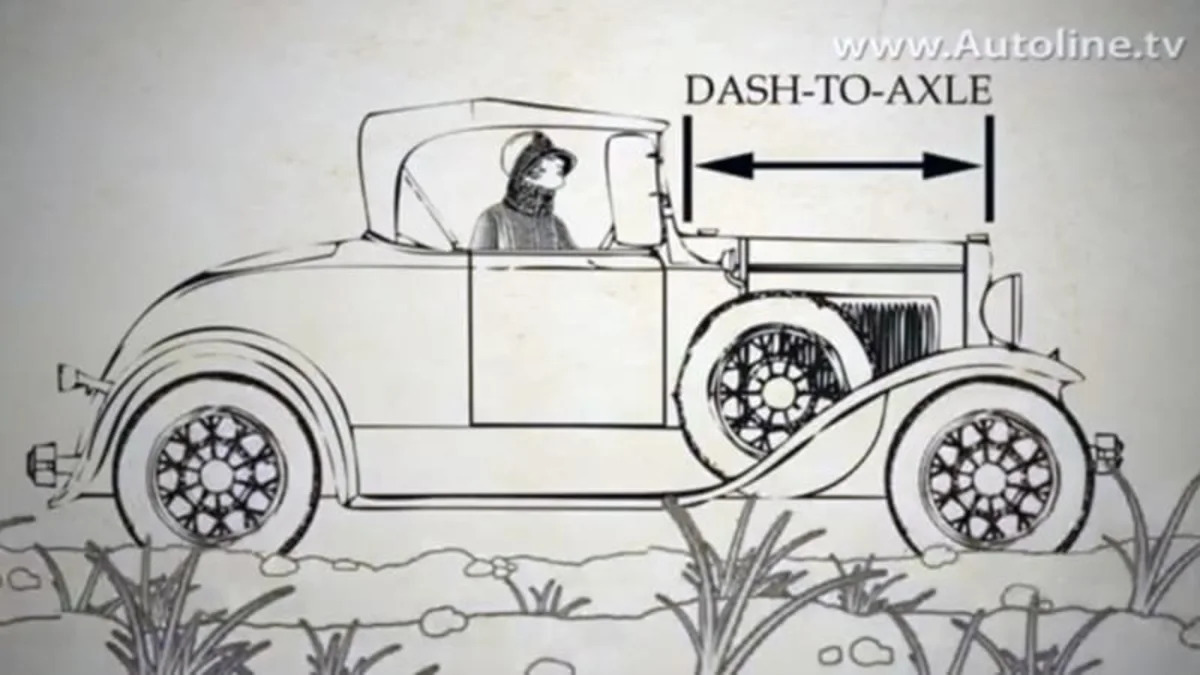Now that we all know what the automotive design terminology Tumblehome means, Autoline Daily's Jim Hall is back for another lesson from the Design Handbook. This time around, he focuses on explaining one of the most commonly used terms to bash front-wheel-drive cars, the dash-to-axle ratio.
Technically speaking, dash-to-axle measures the distance between the A-pillar (also the leading edge of the dash) and the front axle. In terms of vehicle design, a shorter dash-to-axle ratio has become a staple of front-wheel-drive cars due to the placement of the engine and transmission under the hood. A great example of a short dash-to-axle ratio on a front-wheel-drive car is any of the Chrysler cab-forward cars from the 1990s, while the Mercedes SLS AMG shows how a longer dash-to-axle creates a stronger, more performance-oriented design.
For even more proof of this, just compare the profiles of the Cadillac CTS and XTS to see how much of an effect this spacing has on the vehicle's design and proportions. The Autoline Daily episode is posted below, and gives other examples of how dash-to-axle affects vehicle design.
Technically speaking, dash-to-axle measures the distance between the A-pillar (also the leading edge of the dash) and the front axle. In terms of vehicle design, a shorter dash-to-axle ratio has become a staple of front-wheel-drive cars due to the placement of the engine and transmission under the hood. A great example of a short dash-to-axle ratio on a front-wheel-drive car is any of the Chrysler cab-forward cars from the 1990s, while the Mercedes SLS AMG shows how a longer dash-to-axle creates a stronger, more performance-oriented design.
For even more proof of this, just compare the profiles of the Cadillac CTS and XTS to see how much of an effect this spacing has on the vehicle's design and proportions. The Autoline Daily episode is posted below, and gives other examples of how dash-to-axle affects vehicle design.


Sign in to post
Please sign in to leave a comment.
Continue